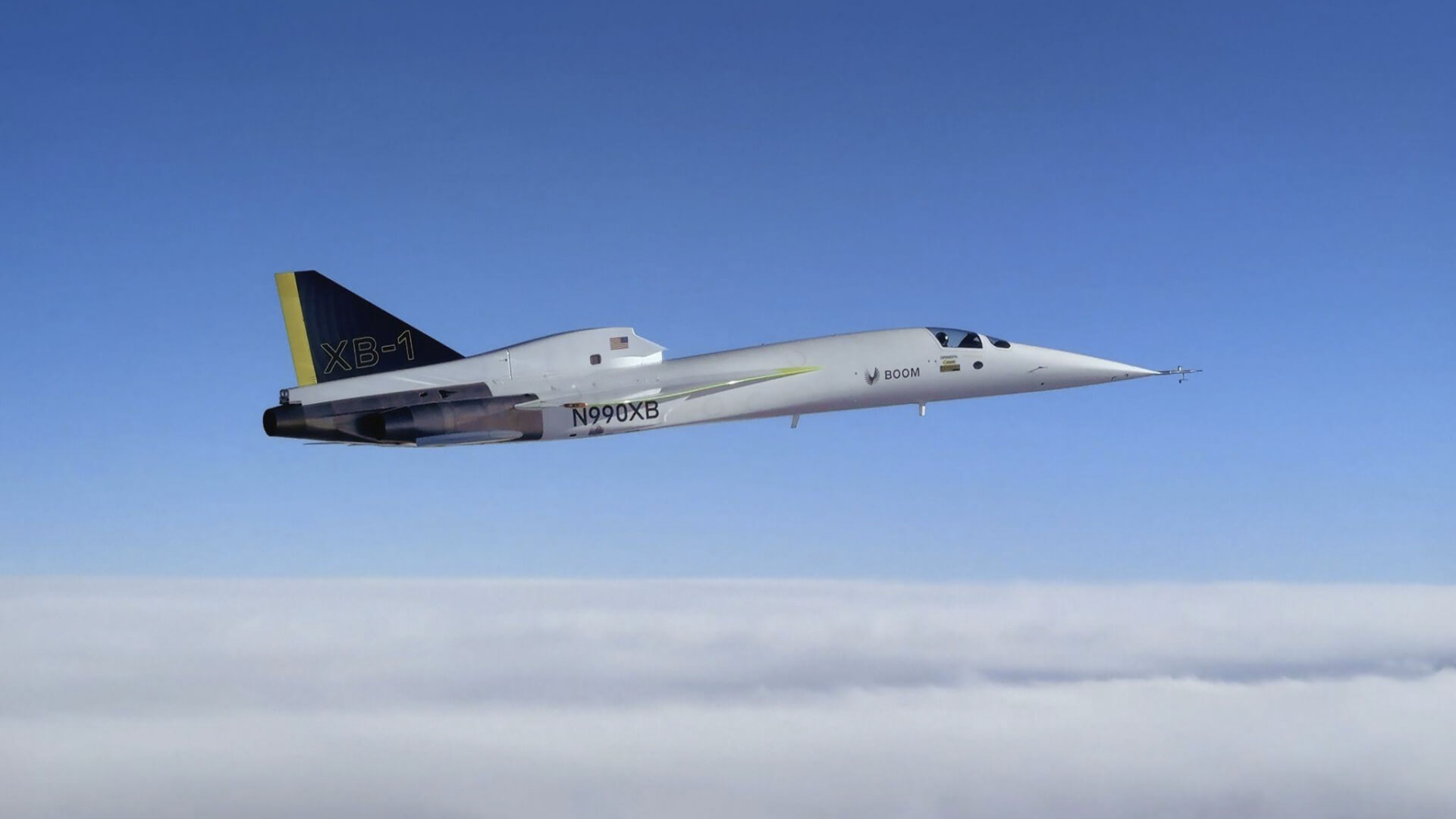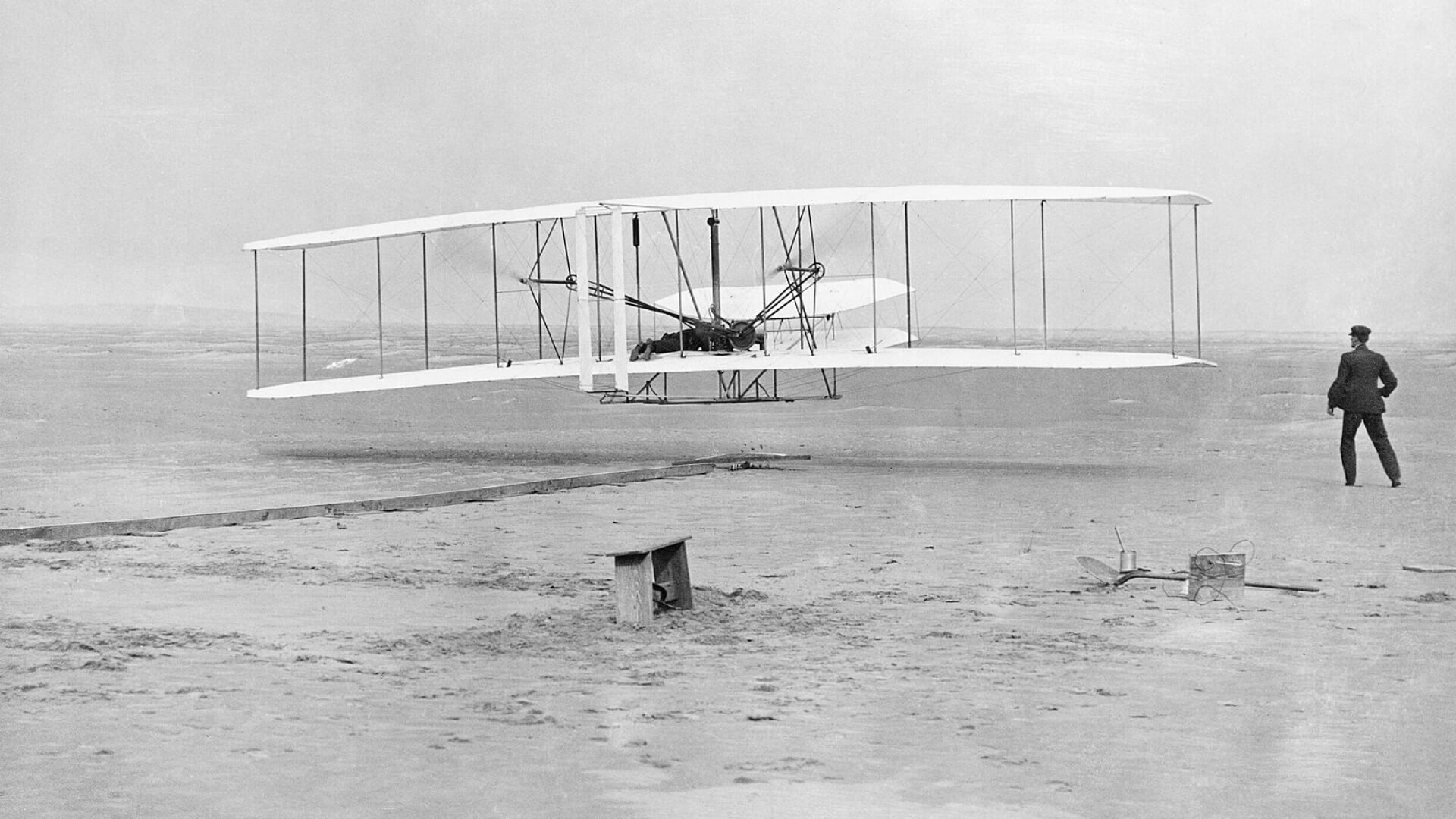As the saying goes, there’s nowhere to go but up. But, in the case of any new aircraft, it must spend quality time on the ground first.
How do engineers test a vehicle that’s intended to fly — while still on the ground? Boom Chief Flight Test Engineer Jeff Mabry explains.
Ground Testing 101
Ground testing is the barrage of tests that aircraft must undergo before first flight. It’s mandatory for any new aircraft design or for an aircraft that has undergone significant structural modification.
All new commercial aircraft undergo testing on the ground before first flight. It’s often a years-long process that’s part of earning an airworthiness certificate from the Federal Aviation Administration (FAA) or other international regulatory body. In the case of Overture, for example, the Boom team is already working with the FAA to develop the certification program for the supersonic airliner. (Click here to learn more about the Overture program.)
That airworthiness certificate? It’s essential to operate an aircraft. You can’t leave the ground without it.
Swing. Run. Test.
Ground testing includes flight loads simulation, material static and fatigue, structural dynamics, modal analysis, airborne and structure borne acoustics, and much more. Some common tests involve:
- “swinging” the landing gear on the ground (to simulate use in the air)
- testing all systems for electromagnetic interference with each other
- running the engines to ensure adequate performance
- testing the functionality of all systems in a manner that reproduces flight

Commercial versus demonstrator
The requirements for commercial certification — as opposed to demonstrator aircraft — are very different. Commercial aircraft programs are designed to meet the requirements of a regulatory agency, such as the FAA. Those requirements are very extensive, given that airlines will fly the aircraft for decades. (Click here for more about certification and safety.)
In the case of demonstrator aircraft — flown under very strict conditions and usually without civilian passengers — the requirements must convince the designers and the FAA that the aircraft will function as intended.

Taking aircraft to the breaking point — or not
Structural testing requirements are a good illustration of the differences between commercial and demonstrator aircraft.
In both cases (commercial and demonstrator), engineers will “load” the aircraft structure to some level beyond what it’s expected to see in flight. Structural loads include aerodynamic forces, inertia, ground reactions and thrust. It’s the measure of the stress that the aircraft structure will experience.
For commercial aircraft, the applied load will exceed what the aircraft will experience during flight. In a typical commercial certification program, there are multiple test aircraft, each dedicated to a different type of testing. Very often, one of these aircraft will be “sacrificed” to endure load structural testing to the breaking point. Manufacturers load the aircraft to its breaking point, or even until it breaks.
When it comes to a one-of-its-kind demonstrator, breaking the aircraft is obviously not feasible. It’s also not necessary. The demonstrator is not intended to carry passengers. Rather, it carries test pilots and flies under very controlled conditions. In the case of a demonstrator like Boom’s XB-1, the applied load is some level above the normal expected flight loads.

Going from isolation to assembly
For a demonstrator aircraft such as XB-1, engineers often begin by testing all new aircraft systems in isolation before completing full assembly and systems integration. For example, they may test the flight control system while it’s powered by an external hydraulic mule before installing it into the aircraft.
- After completing the full assembly, engineers test all systems on the aircraft. In the case of XB-1, this involves powering up the three engines (two of which operate the aircraft’s flight and utility hydraulic systems) to power the flight controls (which are powered by an external source during earlier tests).
- Additional ground tests include examining backup modes of operation. For flight controls, this includes both hydraulic systems as well as a backup DC electrical pump that can power the hydraulic system. Another example would be running the engines on both the primary and secondary fuel pumps to ensure that they can continue operating in all conditions.
When all of the subsystems come together in a completed aircraft, it’s critical to analyze interactions between these systems to identify undesirable performance. Engineers watch for any electromagnetic interference issues between aircraft systems, and will sometimes address problems with better shielding, grounding, or even relocating wires on the aircraft.
After systems, engineers move into even more physical tests. One of the more interesting tests is ground vibration testing or GVT. It’s a unique test during which the aircraft is isolated (either by hanging or putting it on large airbags). It’s then “excited” by placing different electromechanical sensors on the aircraft, or by sweeping the control surfaces at different rates. This excites different modes of vibration in the aircraft, and allows designers to confirm that it matches their analysis. The test also gathers important data that informs flutter testing, which is accomplished later during flight test.
Shifting from Ground to Taxi Testing
Following ground tests, new aircraft are ready for the runway. In the case of XB-1, Boom will conduct all of the initial ground testing at Centennial airport, outside Denver, Colorado. Boom is located near the airport, and we have a hangar on the airfield. It’s an ideal location because we have our manufacturing team nearby in case support is needed.

Flight tests will take place at the Mojave Air and Space Port in California’s Mojave Desert, which has a “supersonic corridor.” It’s one of the few air spaces in the U.S. where supersonic flight is permitted, and the ideal location to test a supersonic demonstrator. It’s also located next to Edwards Air Force Base, the flight test destination for many supersonic military aircraft throughout aviation history.
To get to Mojave, XB-1 must be partially disassembled for transport by land. Upon arrival, the team will repeat some tests to make sure there are no issues caused by the trip and subsequent reassembly.
At Mojave, we’ll re-accomplish some of the same basic tests that were already done in Colorado, such as ground checks that verify systems are installed correctly and performing as designed. Once we are happy that the aircraft is performing the same as it did in Colorado, we’ll do some higher speed taxi testing on the large runway at Mojave prior to the historic first flight of XB-1. This taxi testing will verify both the handling qualities and performance of the aircraft in a safer environment than what we could do in Colorado, but won’t get the aircraft to a speed where there is a chance it could take flight.
Commercial or demonstrator: safety comes first
Regardless of whether an aircraft is commercial or demonstrator, engineers prioritize safety above all else. Each ground and flight test is unique, and custom-built to match the purpose of the aircraft.
For any aircraft design, risks can be more closely controlled on the ground versus in the air. That’s why engineers and test pilots conduct as many tests as possible before flight. It’s always better to uncover an issue during ground tests than while airborne.
By the time that any aircraft takes flight, engineers are confident that the extensive series of tests will result in a safe and successful first flight.







